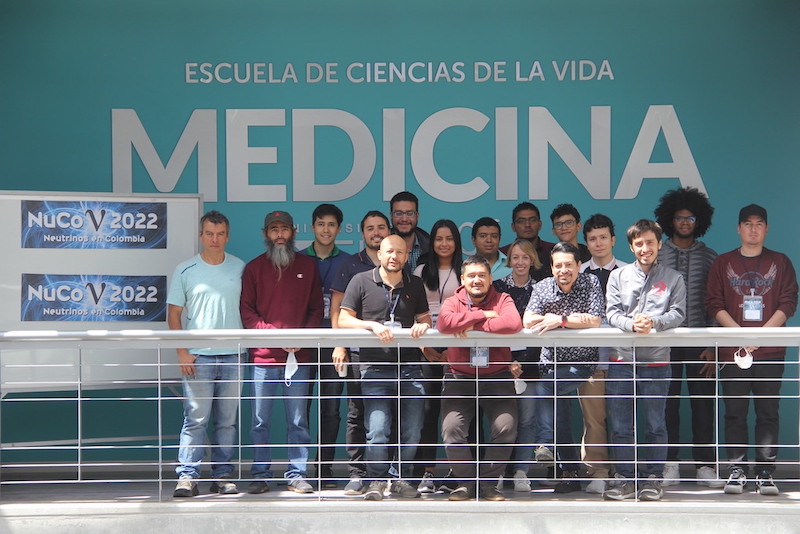NuCo 2022: Neutrinos en Colombia

The second NuCo workshop (Neutrinos en Colombia) will be held on 27-29 July, 2022 at Universidad EIA (Medellín). The goal of the meeting is to provide an opportunity to discuss various aspects of Neutrino physics, like:
- Neutrino oscillations
- Long Baseline Experiments
- Reactor, Accelerator, Atmospheric and Solar Neutrinos
- Neutrino interactions and Cross sections
- Neutrino Masses and Mixing, CP Violation
- Sterile Neutrinos
- Exotic Physics with Neutrinos
- Neutrinos in Nuclear Physics, AstroPhysics and Cosmology
Our community is a growing, active and diverse one, working on a variety of theoretical and experimental aspects of neutrinos. Hence, a broad approach to neutrino physics research is necessary given the nature of the challenge.
We expect this event to provide a platform for maximizing interactions and create new collaborations. Furthermore, we foresee a number of shorter lightning talks on specific topics. These are meant to highlight individual and/or unusual ideas and can also help increase the visibility of younger scientists.
Important dates (deadlines have been extended!):
- Registration deadline: July 22nd, 2022 (at noon)
- Abstract submission deadline: July 25th, 2022
Special Activities
We will have two sessions devoted to tutorials on some aspects on ROOT (a dedicated tool for data analysis commonly used in High Energy Physics), and on GLoBES (a software used for the simulation of neutrino oscillation experiments). Please visit the Tutorials section to see some specific requirements/suggestions in order to be prepared for the dedicated sessions.
In-person conference: The workshop will be held in Medellín.
Sorry, but we are all sick of online events!








